We wanted to write this guide for a couple of reasons:
One, because we know these are useful for owners who wish to buy the parts and complete the work themselves (this can be backed up using our technical support line).
Two, because we were asked about the time we spend doing this job and what was involved. Its a very valid question and we thought the best way to explain was using a guide.
So, how do we check the Master Cylinder?
The car in question came in with the AA, there was a inclination from them that it failed at the master cylinder but had not been fully diagnosed. The first job is to assess the problem. We will always carry out our own diagnosis.
Master cylinders generally will either lose fluid at the base of the reservoir or stop making a seal in the piston chamber.
The picture below is not exactly the same as the Figaro but works on the same theory, and fails in the same way.
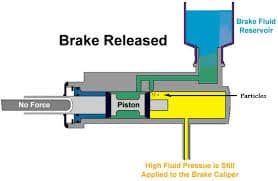
Once we have found this fault we also remove all 4 wheels, remove the rear drums and fully assess all the pipework and cylinders. The car in these images had some new parts on the brakes, but not all so it was worth checking. The owner had also had a scary experience when the brakes failed.
Below is the front caliper, we are also stripping out the rear brakes to assess those too. In both areas we are looking for leaks and corrosion.
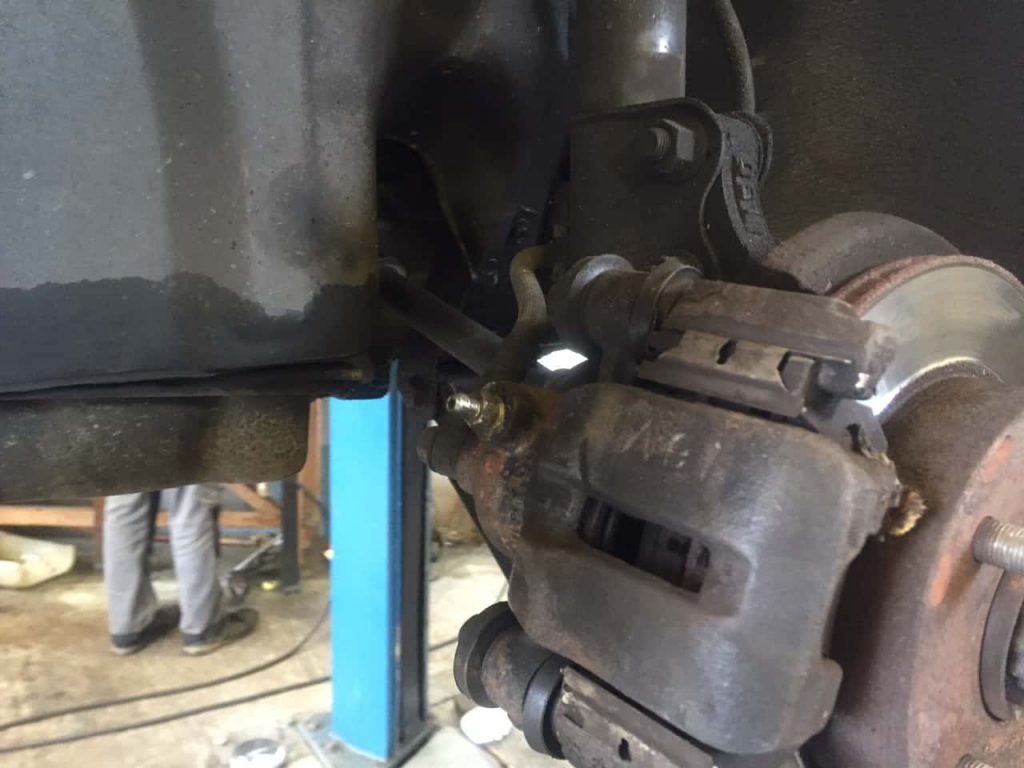
The rear brakes below are stripped, also the cylinder shields are pulled back to check for any seeping.
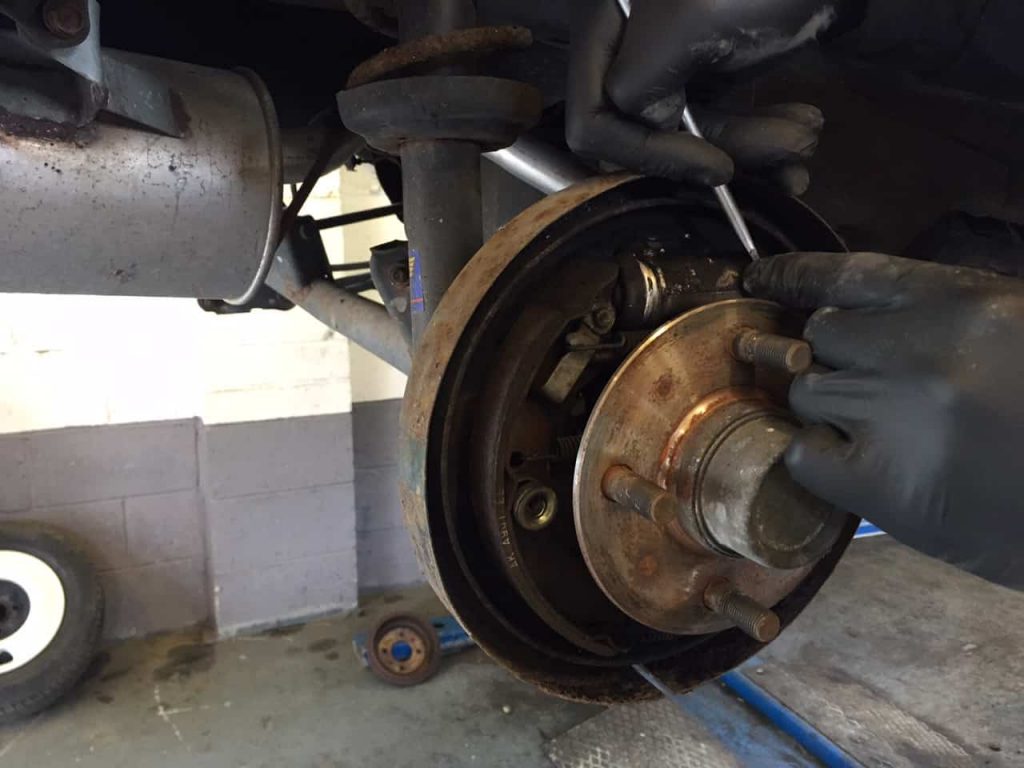
We will also be leaving the car on the ramp with the wheels off for this job. You can’t do this job to its full potential on the floor, having the full view of the brakes is a safer way to ensure they are dry.
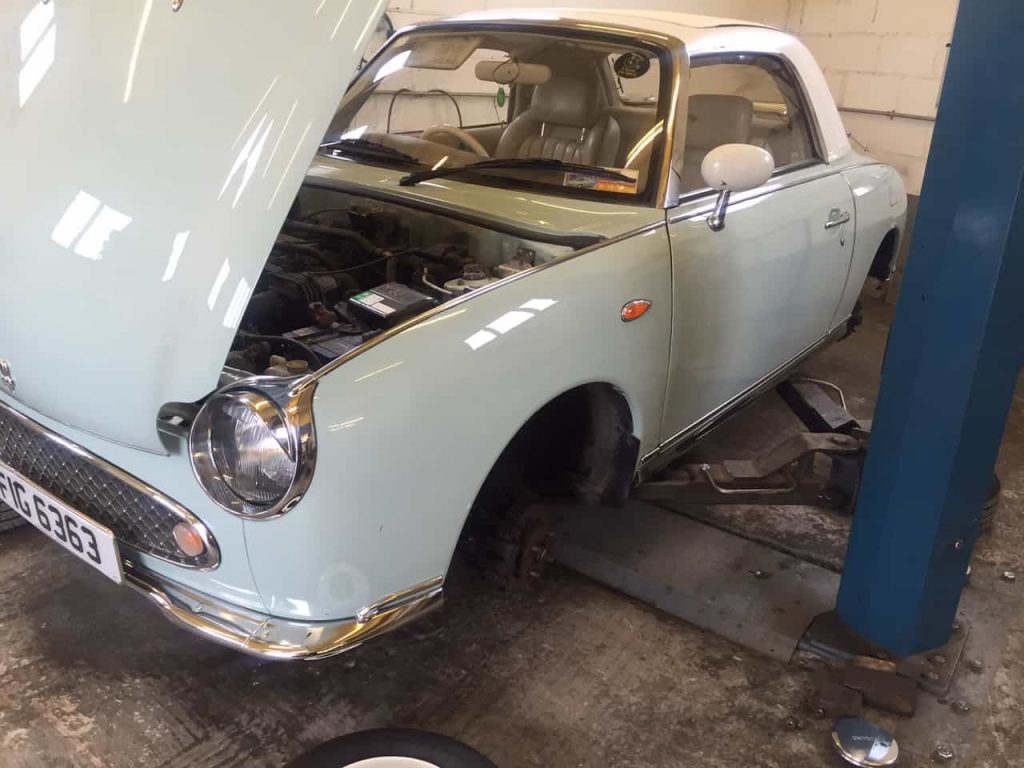
Replacing the Master Cylinder
The next step is to remove the old master cylinder and fit the new one. Its bolted onto the vacuum assisted servo, this is the part that assists you in pressing the pedal. It gives you a bit more strength rather than you having to squeeze all that fluid around the system unaided.
Its important to thread clean all the pipes, brake fluid is probably the most corrosive fluid in your car and you really want a good seal here.
Here is the new master cylinder in place, as well as the old one on the bench. The old one has been stripped to assess, hence the missing pot which is included.
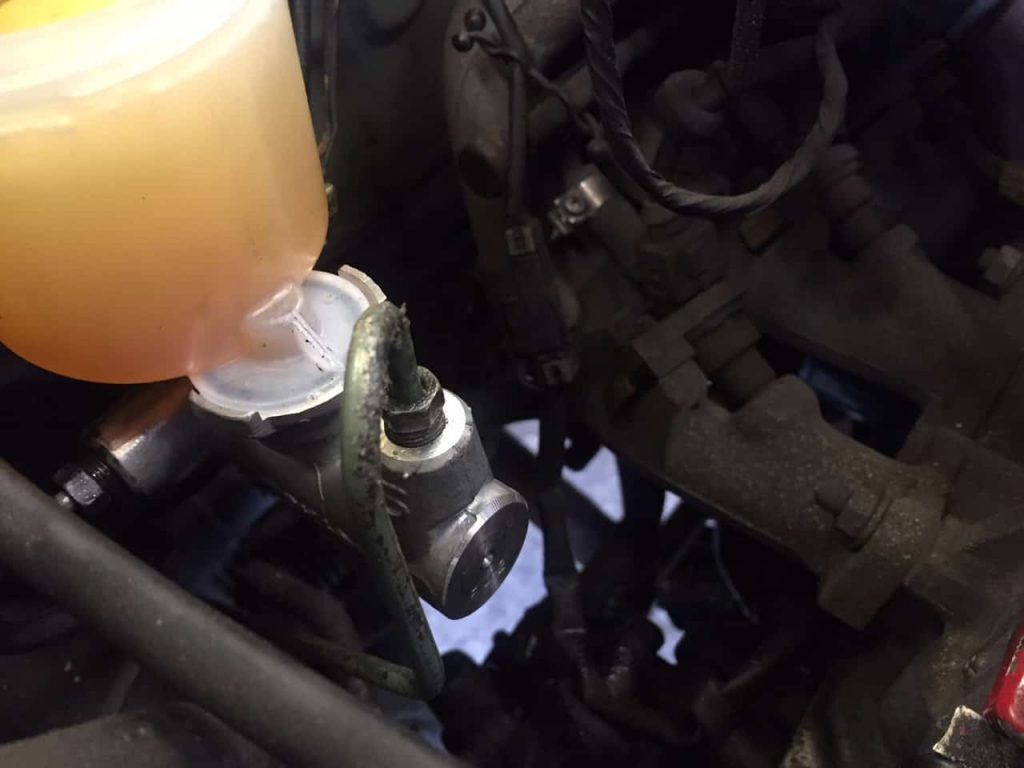
You can see the reservoir seal on the old one, but not the internal piston seal. Its the internal seal which failed in this case.
This is also a good time to inspect and if required paint the servo, they usually have some corrosion so need checking.
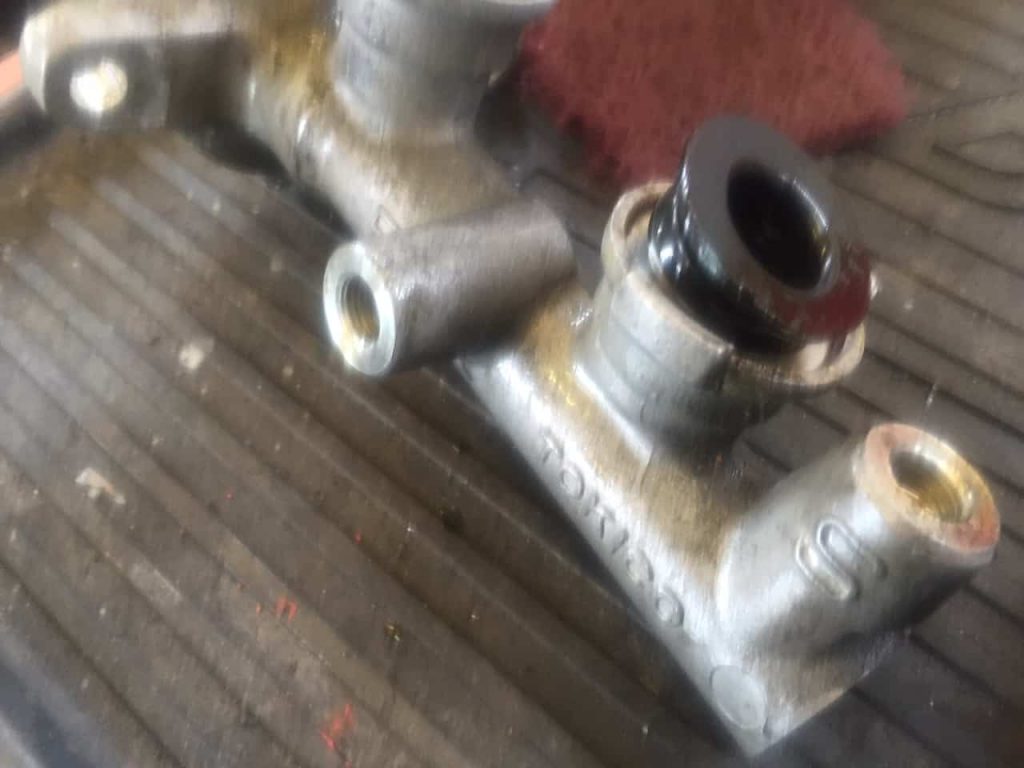
Below is an example from another car, this is the effect of brake fluid leaking on the servo, this is very common.
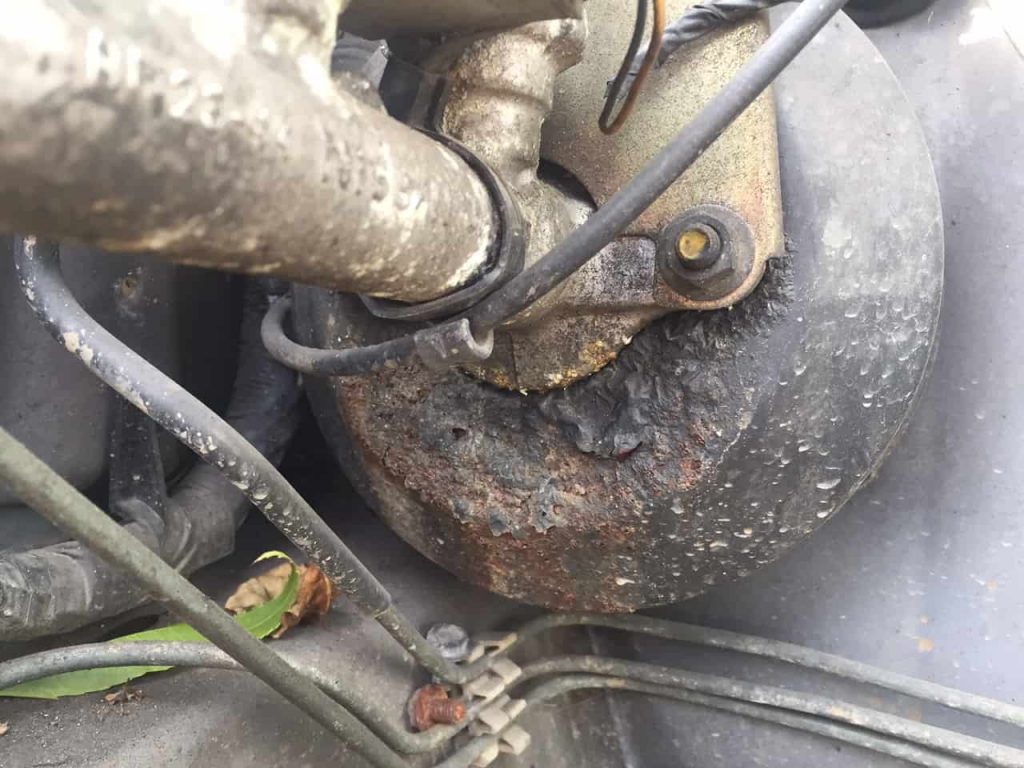
Bleeding the Brakes
Following the fitting its time to bleed all the brakes. We use this pressure bleeding tool to do the job. It gives a better result and is far better/reliable than the old ‘one on pedal’ and ‘one underneath’ shouting when to press and release! Its safer too.
This tool also allows us to replace all the fluid, not just the fluid in the pot, on inspection the fluid in this system was really dirty and had a 4% water content. None of this helps and causes deterioration and brake fade.
Once this is complete and the pedal is firm the car can be road tested. After this we will leak test the car again to ensure its all dry.
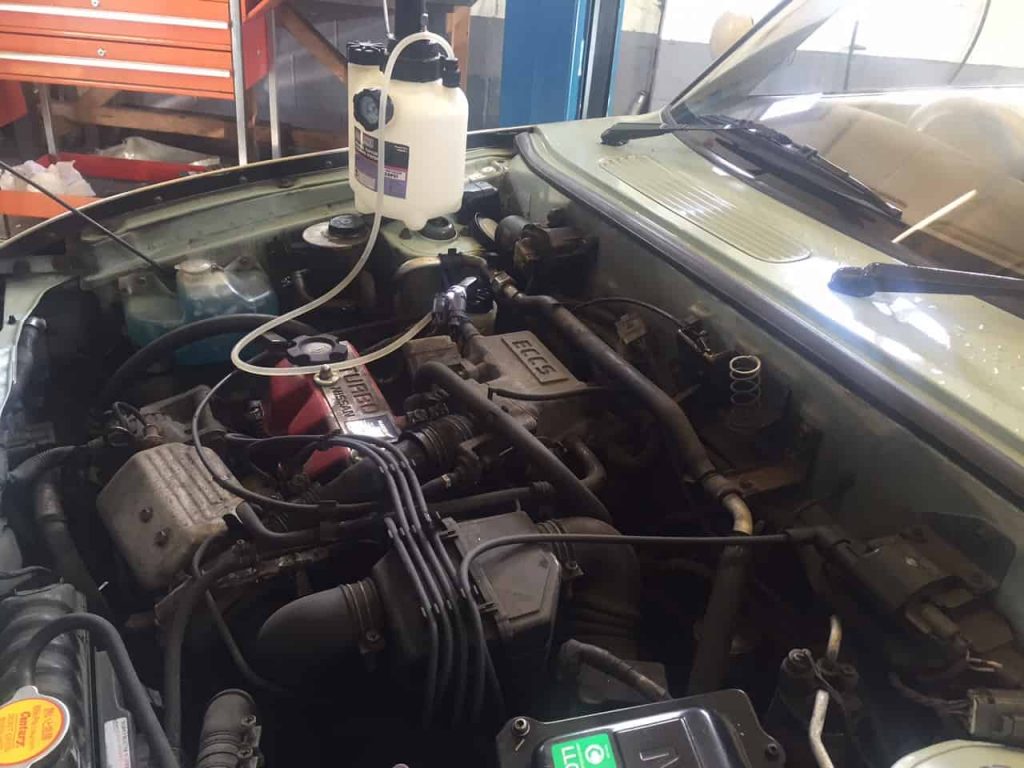
The final step is to clean the area. The fluid that has leaked from the pot over time has caused a dirty stain on the servo and the inner chassis leg. You will notice on almost every Figaro there is a small amount of corrosion on the servo, on many cars there is also corrosion on the chassis. This is due to a weeping brake master cylinder in many cases. Its usually on the top/side of the chassis leg which can be a bit obscured by the suspension turret and air con’ pipe.
Next its off into the wash bay for a chemical clean and jet wash, brake fluid really is destructive. The image below shows the dirt/fluids on the body.
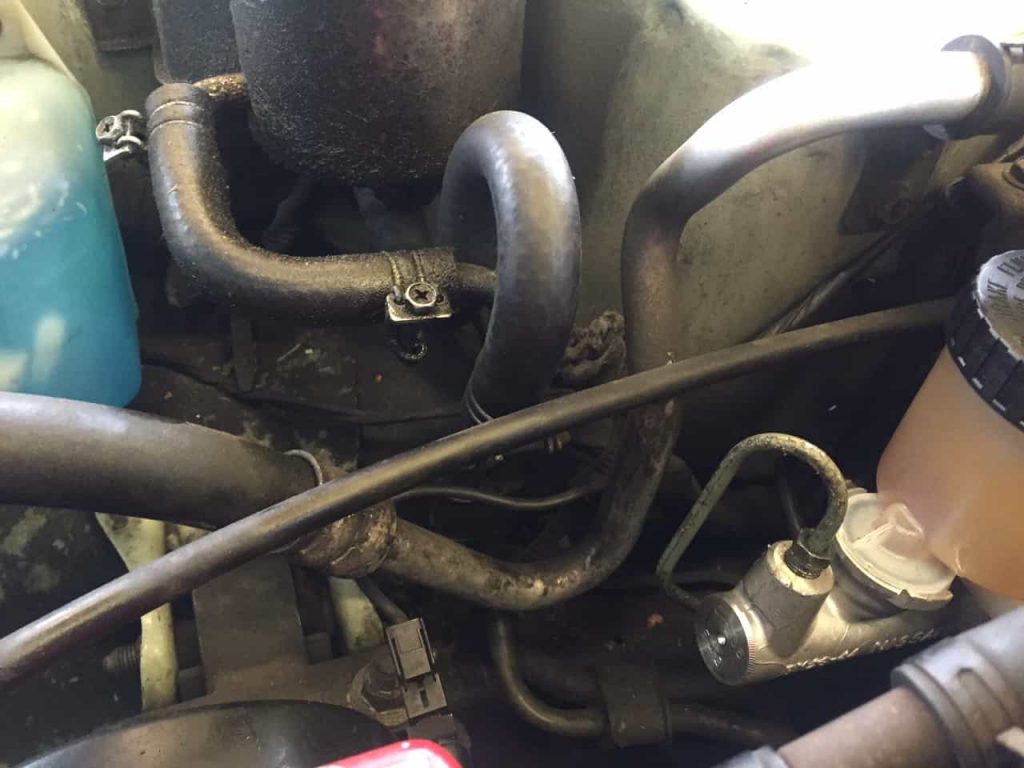
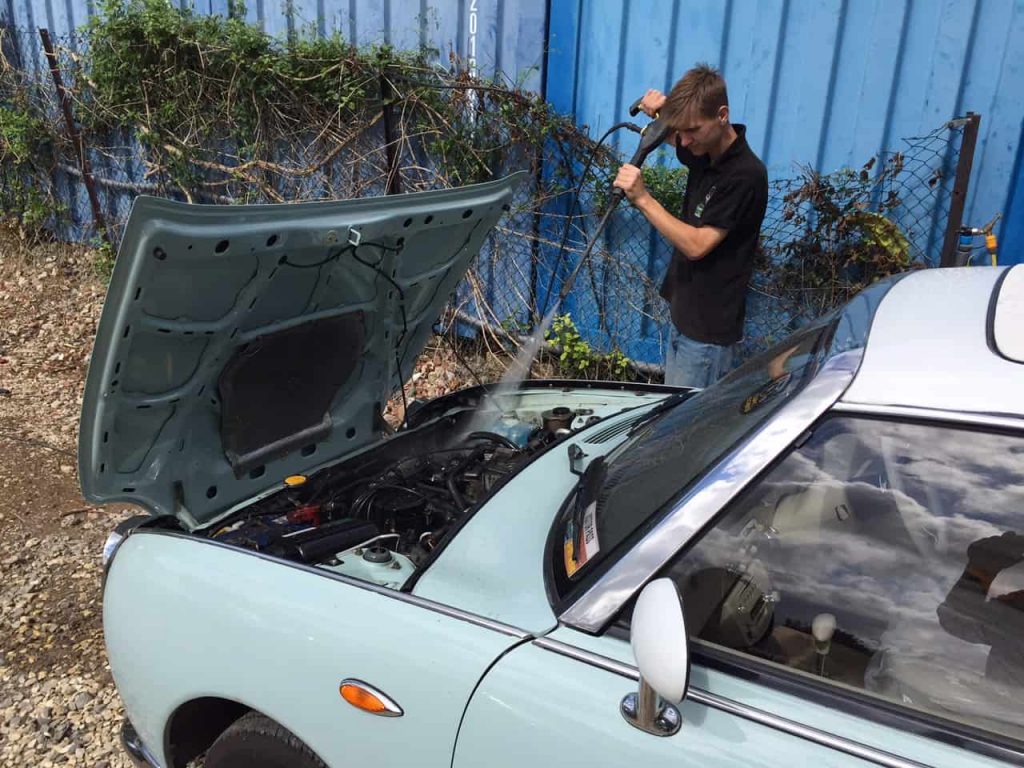
You can see how much difference the cleaning makes visually but more importantly the brake fluid is all washed off, a good long term preventative measure.
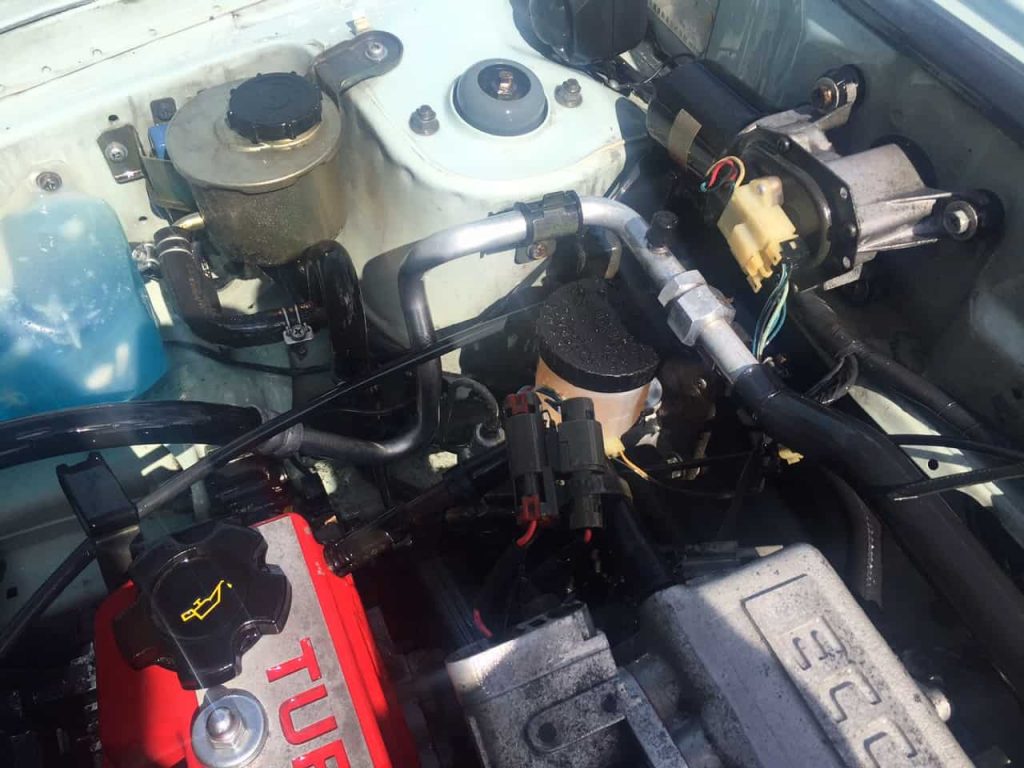
If anyone else has any questions about our costs, the time we spend on our work or just general questions we would love to hear from you!
